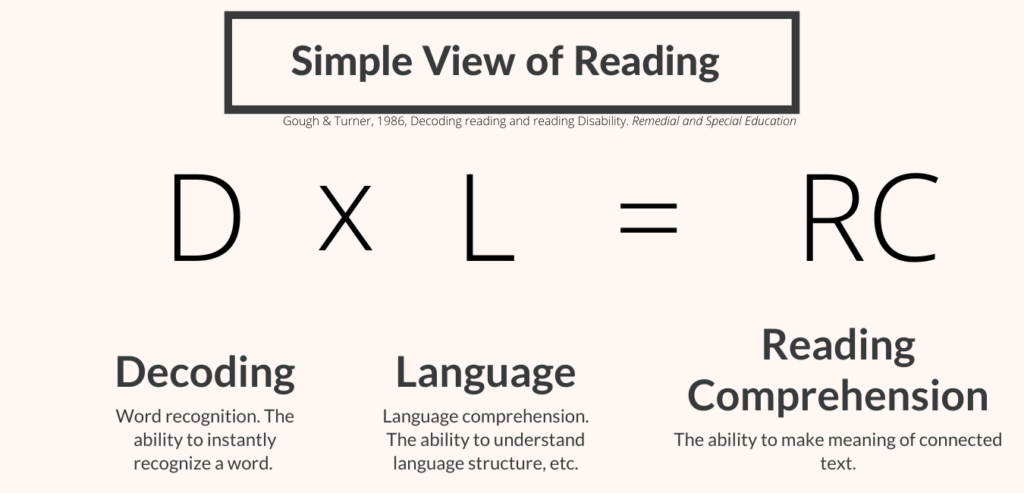The Science of Reading
Learning to read is not a natural process. Our brains are hard-wired to speak and to understand oral language, but not hard-wired to learn to read. Through fMRI technology, scientists have determined what the reading brain looks like and what is needed to develop the portions of the brain used in reading. For an excellent summary of the Science of Reading, read this article from The Reading League.
The Simple View of Reading
Evaluating whether or not a child is a skilled reader can be determined by using the Simple View of Reading.

When children are able to automatically recognize a word (good decoding ability), they can then use their language skills (background knowledge, vocabulary knowledge, language structures, verbal reasoning and literacy knowledge) to successfully comprehend the connected text they are reading. Therefore, decoding skills need to be developed early on so that they are strong and stable and words are recognized instantly. When decoding skills are poor, it doesn’t matter how strong student’s language skills are, they will not be able to use them to comprehend text. In other words, when decoding skills are strong, a reader can put all of their conscious effort into the meaning of the text.
Structured Literacy
Structured Literacy explicitly teachers word recognition and decoding strategies. All students can benefit from this approach to teaching reading, but it is especially necessary for those with dyslexia and other language challenges because it ensures the neural pathway development of the reading portion of the brain. Visit the International Association of Dyslexia for a more in depth look at structured literacy.
How does Maple Grade Tutoring teach reading?
Tutors at Maple Grade Tutoring use the Orton-Gillingham approach to develop reading lesson plans for students with dyslexia, dysgraphia, dyscalculia, ADHD and other language difficulties. The Orton-Gillingham method is systematic and sequential, multi-sensory, individualized, explicit and flexible. It allows students develop the neural pathways needed to have strong decoding skills which in turn leads them to develop stronger language skills culminating in greater reading comprehension.
